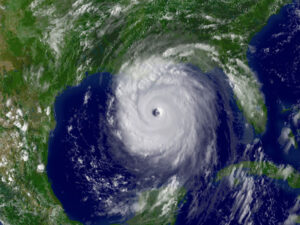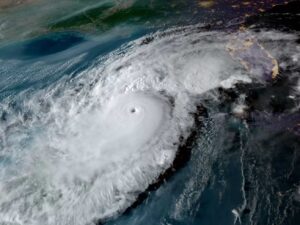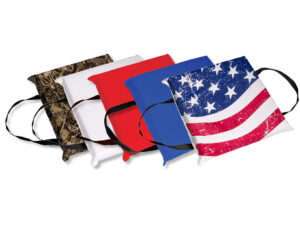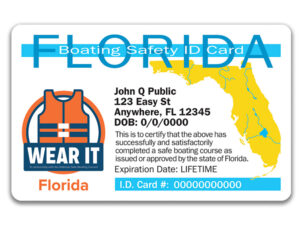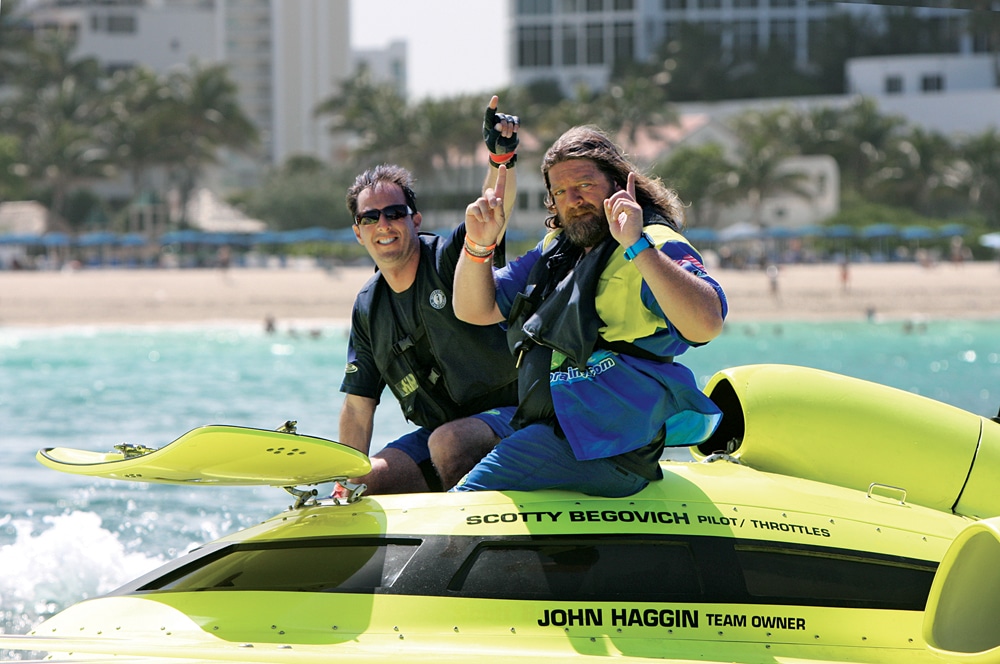
How To Boat Safely at Any Speed
While idling through a no-wake zone, the tropical blue waters of Biscayne Bay look entirely unintimidating. Sure, there are dozens of other boats moving through the channels in every direction and large container ships being piloted into port just around the corner, but it all looks … manageable. Then Marc Granet hammers the throttles and everything changes.
Granet is one of the best boat drivers in the world. He steers Miss Geico, a 50-foot Victory catamaran with twin Mercury 1650 racing sterndrives, to speeds over 150 miles per hour next to other race boats running so close they’re almost touching. He’s won six world championships, set four world records and hit 210 mph. Today, he is taking us for a ride in the Geico Racing’s VIP boat, a Cigarette 38 Top Gun, to impart some important safety lessons all boaters can heed.
“We’ve seen it up close and personal,” he says, “that a great day on the water can turn into a bad day in one step.”
As the speedometer jumps to 80 mph and the Top Gun leapfrogs other boats in the channel in the blink of an eye, I quickly (no pun intended) realize I’d better pay attention.
Safety at Rest
We’re about to run out of the inlet, but the safety story actually started before we cast the lines at the marina. I couldn’t board the boat with Granet until his racing teammate, Scott Begovich (Miss Geico‘s throttleman), threw me an inflatable life jacket.
“You’ll never see us on a boat without a life jacket on,” Granet says. “Sure we can swim, but what if you hit the water, what if you hit your head or hurt your arm?” Falling out of a boat at rest is one thing, but falling out at speed, you’re also in danger of hitting a prop or the side of the boat. At high speeds hitting the water the wrong way is not much different from hitting concrete. If you’re stunned or injured, a life jacket keeps you afloat.
While still safely tied to the dock, Granet and the Geico team walked through the boat and checked the engines, fluids, steering and batteries, making sure everything was as it should be before heading out. On race day this is of paramount importance, because even one minor malfunction could cost victory. Recreational boaters aspire to turnkey boating, in which you just jump in and go like you would the family car, but boats need way more TLC.
“If the hydraulic steering fluid is low and you didn’t check it,” Granet says, “you’ve already set in motion a situation that’s going to unfold on the water.” As we blast through the inlet into a four-foot head sea, I try not to think, if we lose steering, what situation might unfold.
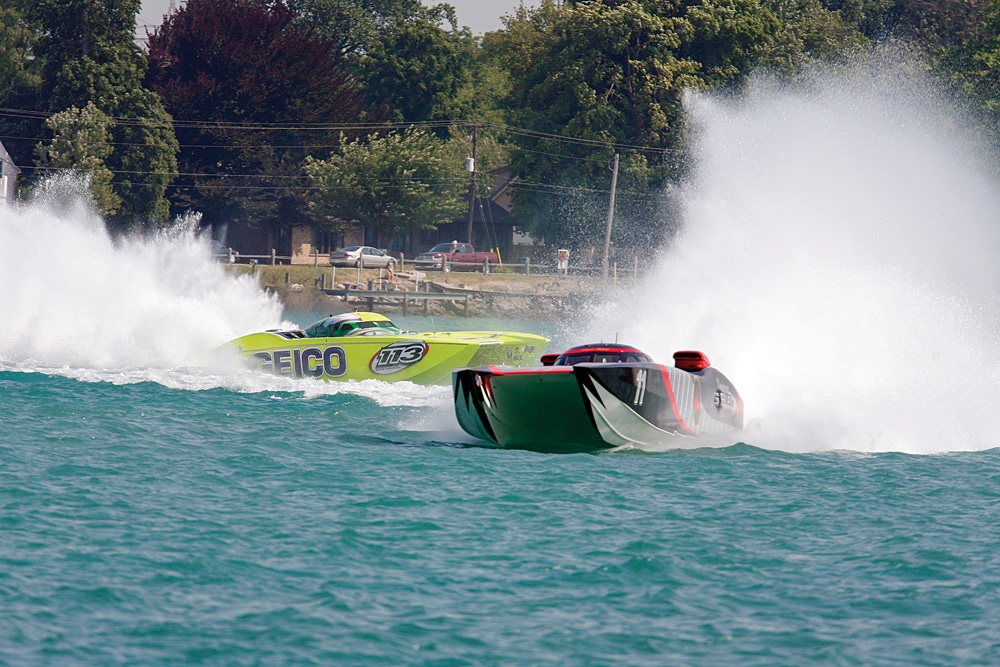
How To Boat Safely at Any Speed
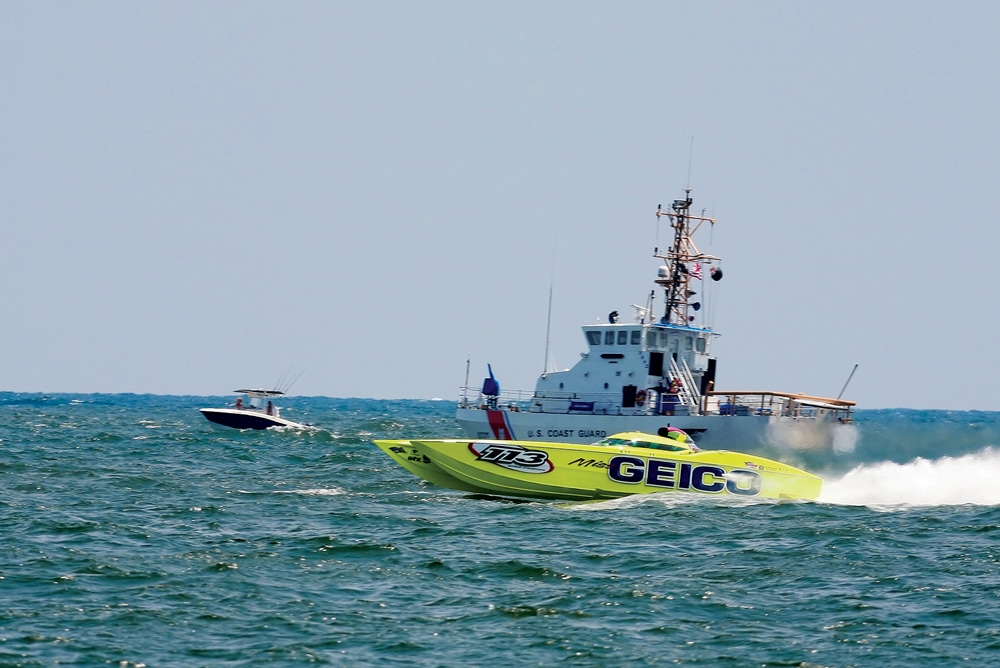
How To Boat Safely at Any Speed
Know Your Boat
The ocean swells are building but Granet pushes the boat, and in short order we are completely airborne, props revving as they leave the water. When we land, the boat catches and keeps on going. I feel like we are flying, but when I look over Granet’s shoulder at the GPS reading, we are under highway speeds: 50 mph.
The lesson learned here is twofold. One, speed feels a lot faster on the water, particularly when the elements are thrown into the mix — and the fact that you are not buckled in with a seat belt. Two, this is a driver in complete control of the situation in a boat that’s made to do this. In fact, Granet says the boat would perform better if he goosed the throttle higher, but we might not appreciate it so much. The smart captain knows his vessel.
“I recommend you find a quiet place on the water with your life jacket on and a friend at your side, and go out and test your boat,” Granet says. “Start making some turns at speed [editor’s note: typically 30 mph] and learn how your boat reacts.” How does it handle wakes? How does it handle added weight? What changes when you have crew up in the bow or all on one side, and when you have full fuel or half fuel? You can learn how your boat will respond when you need to make a quick decision. “Maybe you only have to turn the wheel 10 degrees to make an evasive maneuver,” he says.
As we run back into the calmer waters inside the inlet, I don’t realize this point is about to be driven home.
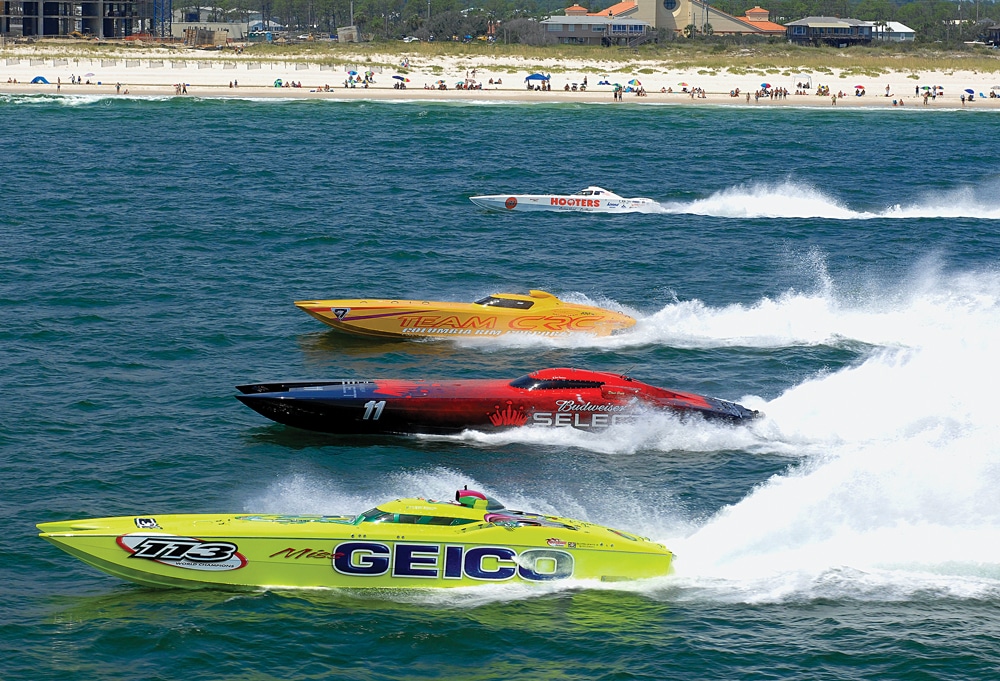
How To Boat Safely at Any Speed
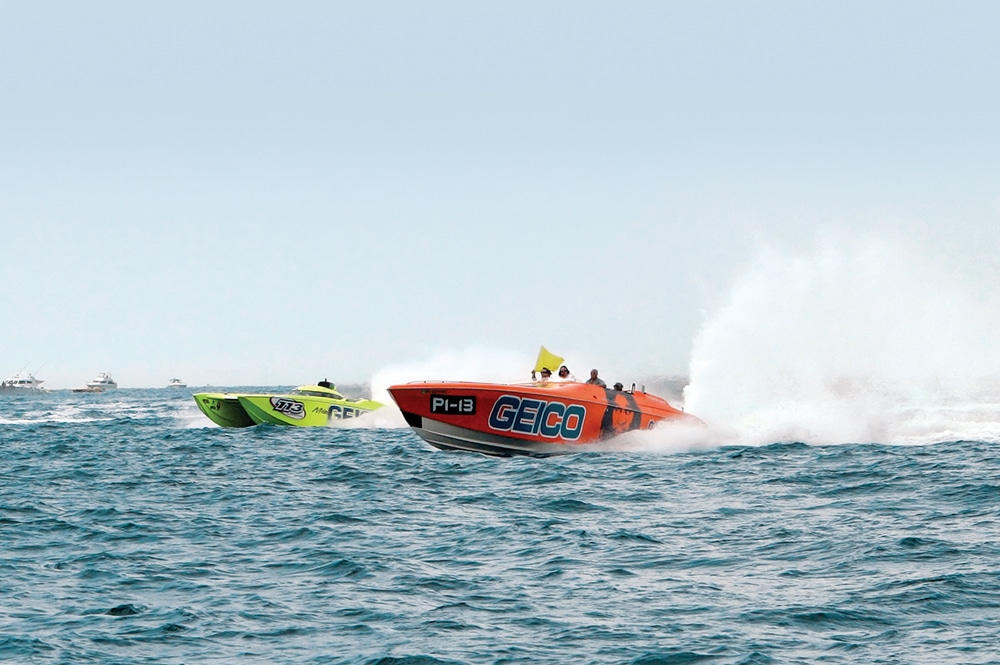
How To Boat Safely at Any Speed
Playing in Traffic
We pull out of the main channel and Granet puts the boat in neutral so we can review some safety points. As we are talking, a guy in a triple-outboard center-console blasts by us. A cruiser is coming from the opposite direction at about 25 to 30 mph. The center-console starts to turn in front of the cruiser but suddenly hooks an S-curve the other way. “Look at that,” Granet says. “An experienced boat captain made a mistake, put three people in jeopardy on his boat and six people on the cruiser. But he corrected and accelerated out of the way.”
The person at the helm has to be ever vigilant to know what’s going on around him. Granet is used to operating at speeds of 150 to 180 mph with another 10,000-pound boat only a few feet away from him. Here’s how he handles it.
“I assume that the other person is not aware of me,” he says. “In the race boat I know they’re professionals next to me, but I have to assume, as we go into a turn at 140 mph, that they may have an issue I don’t know about.” When he’s on the water with his family, Granet doesn’t count on other boaters to even know he’s there.
“That big sport-fish that’s coming at me, does he see me?” he says. “I’m in a small boat with a white hull on a cloudy day; I’m not so sure.”
If you find yourself in a situation, like that center-console did cutting in front of a cruiser, you have to find a way to get out of it. Think fast.
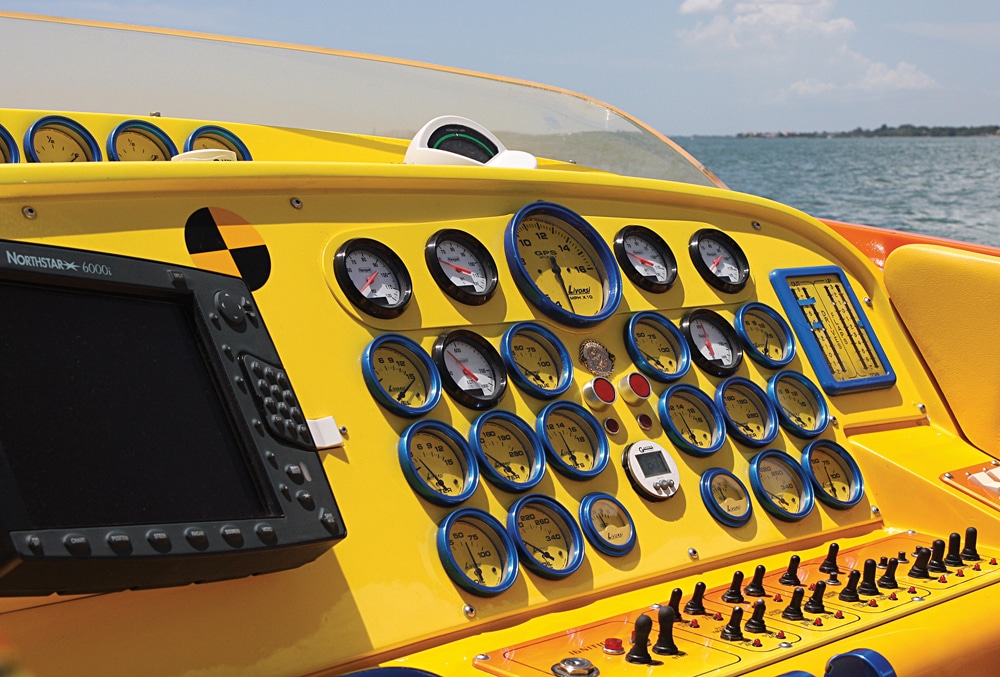
How To Boat Safely at Any Speed
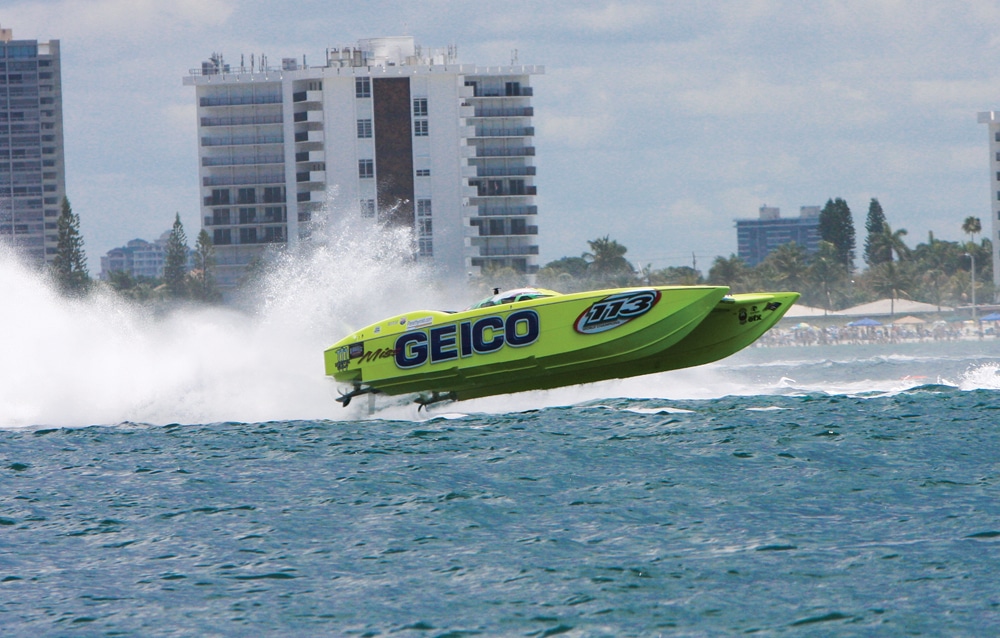
How To Boat Safely at Any Speed
Understanding Speed
When Granet eases off the throttles at a no-wake-zone sign, the boat continues on plane for what seems like 40 or so feet past the sign until it settles into idle speed displacement mode. Without trying, he demonstrates a point brought up in every Coast Guard lecture or introductory boating course I’ve ever seen: There are no brakes in a boat.
As today’s boats become faster, people need to be even more aware of what’s around them (today many boats are capable of 50, 60 or even 70 mph).
“The closure speeds that we are used to, most people aren’t used to,” Granet says. “It’s like running across a road: You think there’s plenty of time to get across it and you start running, and halfway through you realize, ‘Oh my God, the cars are coming at me way faster than I thought!’”
Studies that many insurance companies use estimate that the average car driver’s reaction time — the time when they perceive something to the time they actuate the brakes and start slowing the car — is around 1.5 seconds. This is not a hard and fast number; tons of other variables can factor in, but we can apply it to boating to illustrate a point.
At 50 mph, a boat is traveling 73.3 feet per second. So with a hypothetical reaction time of 1.5 seconds, the boat will move more than 100 feet before driver response takes place. Think of this and ask yourself: Are you a safe enough distance from the other boats around you?
Car driving has a three-second rule — you should pass a fixed object three seconds after the car in front of you. Boaters, without brakes, should build in more time.
Plus, the same issues that people have on the road in cars — wandering from lanes, texting or doing something else distracting, and tailgating — occur on the water.
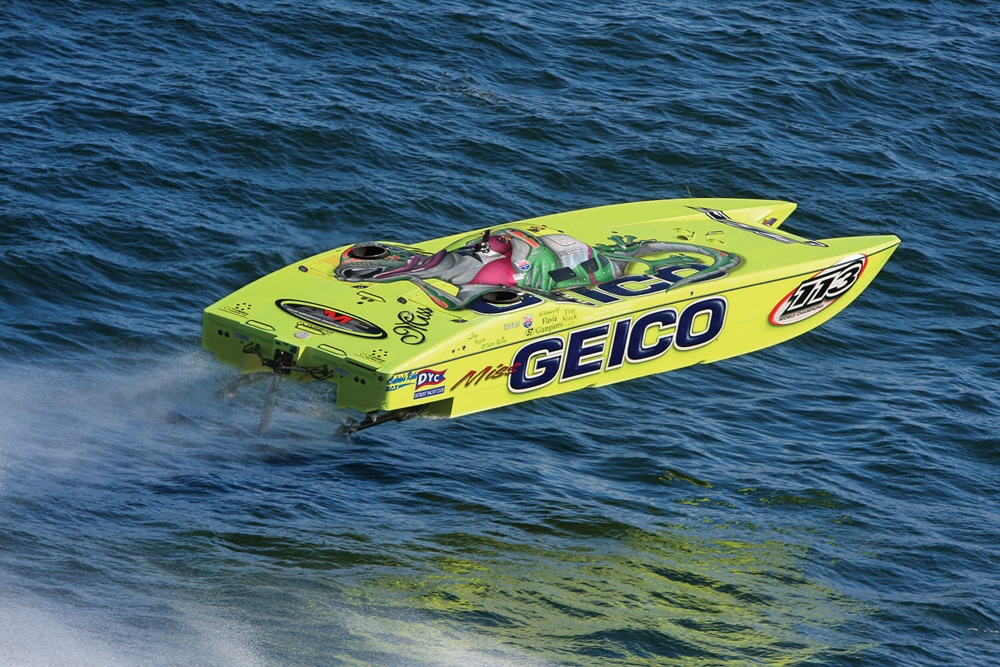
How To Boat Safely at Any Speed
Evasive Maneuvers
As we climb back onto plane, with other boats in front of us and on the other side of the channel, Granet again refers to that center-console that evaded the cruiser.
“He got out of it by accelerating and turning slightly,” he says. “If you turn the wheel sharply or pull back the throttles, you can find yourself in a worse position.”
When you chop the throttles, you change the center of gravity (CG) and the axis that the boat is running on. If you do it instantly, the people on the boat fly forward. So does the fuel in the tanks. The bow goes forward and down; the transom lifts up. You can change the way a boat handles and hurt people on board.
Turning the wheel hard-over at high speeds can have the same effect, throwing off the boat’s CG and knocking around passengers. Also, the boat could catch on a chine or the props could lose their bite and cause the boat to spin out. It’s better, if at all possible, to make gradual turns.
In races, Granet and his throttleman Begovich try to avoid drastic maneuvers by anticipating everything around them. “Our boat at speed runs a football field per second. I’m looking at the next football field ahead,” Begovich tells me. Granet is always planning the next turn well before he moves the wheel.
He does the same thing when he’s taking his family out on the weekend. “I’m always figuring out what the wake is doing from a boat that passed 20 seconds before,” he says. “What’s that jet-skier doing? Where is the boat pulling a tuber going to turn?” As a world record driver, situational awareness might be his most important trait.
“Most experienced captains have it,” he adds. “As they approach an inlet, they’ve already formulated what the waves are doing, whether that sailboat in front is under power, and that there’s a boat easing up on the starboard side — they’ve already anticipated where they need to be and what they need to do.”
We jump back up to 80 mph as channel markers whizz by in a blur and boats on plane look like they’re standing still. I’m at ease knowing Granet is a man with a plan.
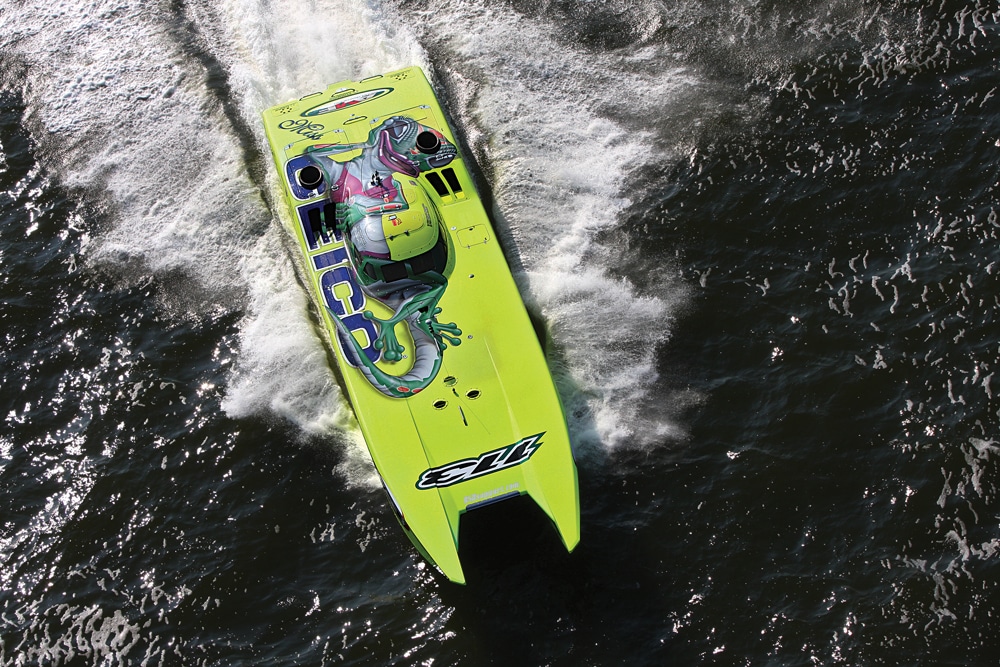
How To Boat Safely at Any Speed
Red, Right, React!
You’re cruising along when something happens in front of you. How far will your boat move before you react? Making the disclaimer that 1.5 seconds is not an official time (we don’t want to be sued), if it’s yours, here’s how far your boat will go before responding at speed.
10 mph – 22 feet
15 mph – 33 feet
20 mph – 44 feet
25 mph – 55 feet
30 mph – 66 feet
35 mph – 77 feet
40 mph – 88 feet
45 mph – 99 feet
50 mph – 110 feet
60 mph – 132 feet
70 mph – 154 feet
100 mph – 220 feet

